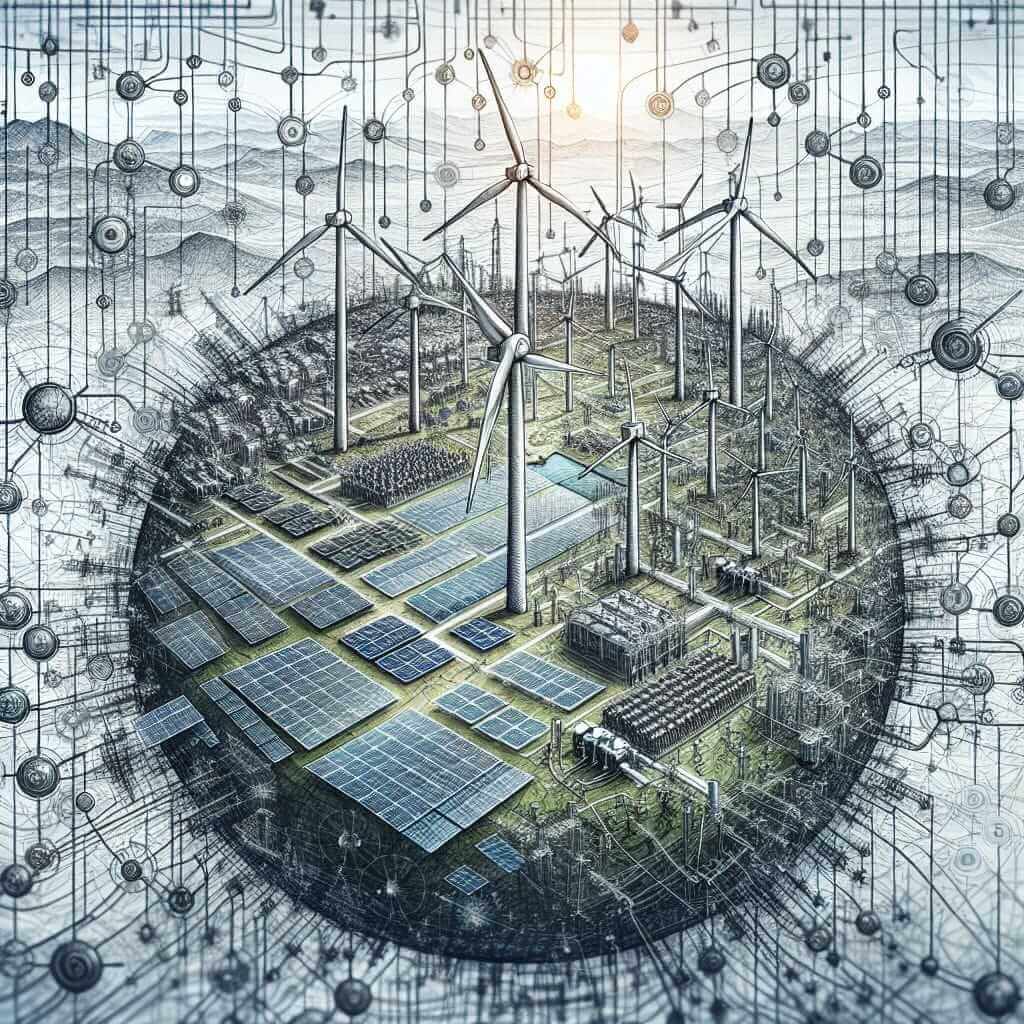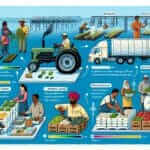The Reading section of the IELTS exam often includes passages on current and relevant topics like renewable energy. Understanding the challenges of integrating renewable energy into national grids is a frequent issue due to its global significance. This topic can show up in different formats in the IELTS exam, ranging from easy to hard readings. Today, we’ll provide a practice reading text along with questions and answers to help you prepare.
Practice Reading Text: Medium Level
Renewable energy sources like solar, wind, and hydro are touted as the future of sustainable energy. However, integrating these sources into national grids presents several challenges. This text explores these challenges in depth.
Integrating Renewable Energy into National Grids
Renewable energy is increasingly becoming a substantial part of the world’s energy mix. Countries around the globe are pushing towards achieving greener and more sustainable futures. Nevertheless, the process of integrating renewable energy into national grids is fraught with obstacles. Notably, intermittency, grid stability, storage solutions, and high initial costs stand out as significant challenges.
Intermittency refers to the irregular and unpredictable availability of renewable energy sources. For instance, solar power generation depends on sunlight, while wind energy is contingent upon wind conditions. This intermittency can cause fluctuations in the power supply, making it challenging to maintain a steady and reliable grid.
Grid stability is another prominent issue. Traditional power grids were designed for continuous and predictable electricity supply from conventional sources like coal and nuclear plants. Integrating renewable energy into these grids requires substantial modifications to handle the fluctuating inputs from renewable sources.
Innovative storage systems are vital for addressing the intermittency of renewable energy. These systems can store surplus energy generated during peak production times and release it during periods of low generation. However, developing and deploying these systems at scale involves significant technical and financial hurdles.
Moreover, the initial costs of renewable energy infrastructure—such as solar panels, wind turbines, and associated technologies—are relatively high. While the long-term benefits and savings are considerable, the initial investment can be a deterrent for many countries.
Additionally, regulatory and policy frameworks need to adapt to facilitate the smooth integration of renewable energy. Governments must enact supportive policies, provide incentives, and remove bureaucratic barriers to accelerate this transition.
Transitioning to a renewable energy-dominated grid is inevitable for a sustainable future, but the path is laden with intricate and multifaceted challenges. Effective solutions and collective efforts are crucial for overcoming these hurdles and achieving a greener planet.
Questions
Multiple Choice
- What does the term ‘intermittency’ refer to in the context of renewable energy?
- a) The high cost of renewable energy
- b) The irregular availability of renewable energy sources
- c) Government policies on renewable energy
- d) The need for innovative storage solutions
True/False/Not Given
- Intermittency makes it easy to maintain a steady and reliable grid. (True/False/Not Given)
- Traditional power grids are designed for continuous electricity supply from renewable sources. (True/False/Not Given)
Matching Information
-
Match the challenges with their descriptions:
- a) Intermittency
- b) Grid stability
- c) High initial costs
i) Difficulty in maintaining steady supply due to unpredictable renewable energy sources.
ii) Significant investment required for infrastructure.
iii) Traditional grids need modification for handling renewable inputs.
Summary Completion
-
Complete the following summary using the words in the box below:
Renewable energy sources such as solar and wind are increasingly joining traditional grids. However, challenges such as _____, grid stability, storage solutions, and ____ initial costs complicate this integration.
Options: intermittency, support, import, high
Answer Key & Explanations
Multiple Choice
- b) The irregular availability of renewable energy sources
True/False/Not Given
- False (Intermittency makes it challenging to maintain a steady and reliable grid.)
- False (Traditional power grids are designed for continuous electricity supply from conventional sources, not renewable sources.)
Matching Information
-
- a) i) Difficulty in maintaining steady supply due to unpredictable renewable energy sources.
- b) iii) Traditional grids need modification for handling renewable inputs.
- c) ii) Significant investment required for infrastructure.
Summary Completion
- intermittency, high
Common Mistakes
Students often misunderstand the term ‘intermittency’ and confuse it with other concepts like ‘efficiency’ or ‘reliability’. It’s crucial to understand that intermittency is inherent to most renewable sources due to their dependency on natural conditions.
Vocabulary
- Intermittency (noun) /ˌɪntərˈmɪtnƏnsi/: the irregular occurrence or interruption of a process or service.
- Grid stability (noun) /ɡrɪd stəˈbɪlɪti/: the capacity of an electrical grid to provide uninterrupted energy supply.
- Infrastructure (noun) /ˈɪnfrəˌstrʌktʃər/: the basic physical and organizational structures needed for the operation of a society or enterprise.
Grammar Focus
- Passive voice in complex structures: “These systems can store surplus energy generated during peak production times…”
- Modal verbs for necessity and possibility: “Governments must enact supportive policies…”
Conclusion
Preparing for the IELTS Reading section requires practice with relevant and timely topics. This exercise on renewable energy challenges integrates technical vocabulary and complex sentences, akin to real IELTS exams. Remember to focus on terminology and understanding the context to excel in your reading comprehension.
Improve your reading skills by practicing regularly and explore more topics on the effects of renewable energy on national economies or the challenges of achieving renewable energy targets. This will not only widen your knowledge but also make you comfortable with various question types.
 challenges_of_integrating_renewable_energy_into_the_grid
challenges_of_integrating_renewable_energy_into_the_grid
By grasping these concepts, you are well on your way to achieving a high score in the IELTS Reading section. Happy studying!


